Recent reports about something called Addmitad got us curious, so we decided to investigate. Turns out this is a browser hijacker site that will redirect you to itself or to other pages you don’t want to visit, show aggressive popups, and possibly set itself as your homepage. Also, apparently, this hijacker is somehow linked to Ebay.com, and many users who visit the e-commerce site get rerouted to Addmitad.com.
As is the case with other hijacker sites we’ve covered – maxask.com, boyu.com.tr, etc. – the way the rogue site gains permissions in the browser is either by a misleading “Allow” popup the user clicks or through an unwanted extension that takes over the browser’s settings. In the case of this hijacker, one extension that seems to enable it is “what font – find font“, which is currently on the Chrome Web Store.

Aside from being super frustrating, the presence of this hijacker in your browser is undoubtedly a security hazard and should be treated as such. So, whatever got you Addmitad, we are here to help you clear your browser, and restore its settings to the way they were before the rogue site took over.
Addmitad Removal Guide
Hijackers are intentionally made difficult to remove, so it’s likely you’ll need to take your time and perform some semi-advanced steps to delete it. That said, in some lucky instances, a few quick and simple steps might do the trick. For this reason, we recommend that you first give a try to the following “quick removal” instructions and proceed to the more advanced guide only if they don’t work in your case:
- Open your browser, navigate to the menu, and access the Extensions section.
- Search for unfamiliar extensions that could be linked to Addmitad. One extension that could be linked to this rogue site according to users is “what font – find font“.
- If there’s a Remove button, click it immediately. It might not always work, but worth the shot.
- Then go to the browser’s settings > Privacy and Security > Site Settings, check Notifications and Pop-ups and redirects permissions and if you see Addmitad.com there, delete it.
Restart the browser to confirm if Addmitad is still present. If it persists, continue with the more thorough steps. Simple attempts sometimes fall short.
SUMMARY:
| Name | Addmitad |
| Type | Browser Hijacker |
| Detection Tool |
Some threats reinstall themselves if you don’t delete their core files. We recommend downloading SpyHunter to remove harmful programs for you. This may save you hours and ensure you don’t harm your system by deleting the wrong files. |
Addmitad doesn’t always go away so easily. Hijackers often sneak in through bundled software, which may cause the hijacker to reappear later.
We can help you get rid of Addmitad, but without knowing the exact rogue program responsible for its appearance, we can’t provide specific steps for it.
However, you can still use a reliable malware removal tool, like SpyHunter, which can help detect and remove related threats. It’s also safety measure against repeated invasions.
How to Get Rid of Addmitad.com
If “Managed by your organization” is in your browser, that’s a red flag indicating that the hijacker has taken over and introduced a rogue third-party policy to it. This policy is what’s stopping you from removing Addmitad and it’s what you must take care of first:
For Chrome users, type chrome://policy into the address bar and hit Enter.
If you use a different browser, say Microsoft Edge, just type edge://policy. Same with other Chromium browsers – just change the name.
This takes you to a list of policies currently active in the browser. If there’s a rogue policy there, it will have a value made of random letters and numbers strung together. Copy these policy values to a text document. Keep them handy for the next steps.
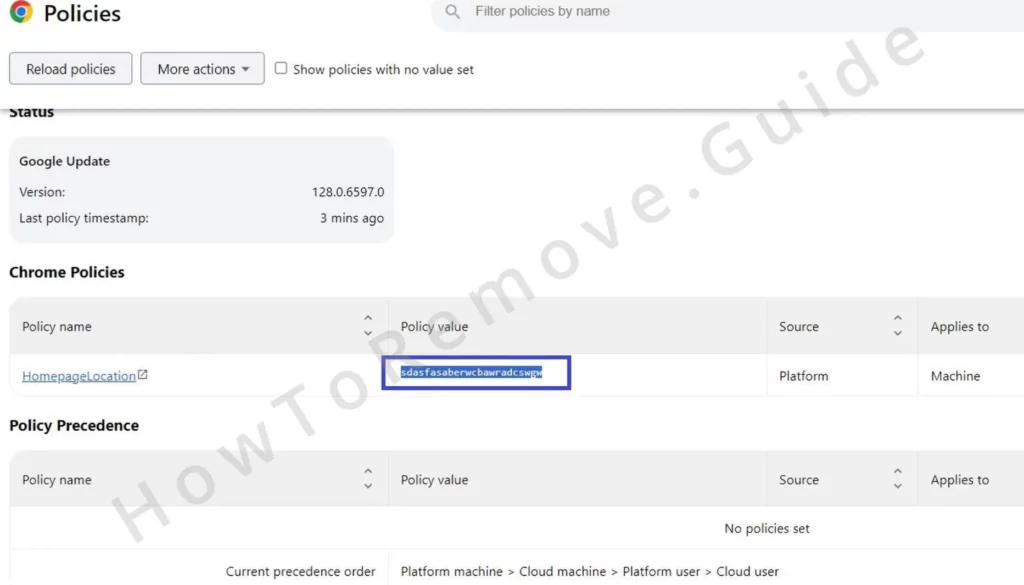
Now, return to the Extensions Manager through the browser’s menu.
It’s possible Addmitad redirects you away from this page. That’s a deliberate attempt to prevent removal. To bypass this, manually delete all extension data by accessing the extensions folder directly on your computer. It’s an effective workaround for stubborn extensions.
Find the extension folders here:
- Google Chrome:
C:\Users\[Your Username]\AppData\Local\Google\Chrome\User Data\Default\Extensions - Microsoft Edge:
C:\Users\[Your Username]\AppData\Local\Microsoft\Edge\User Data\Default\Extensions - Opera:
C:\Users\[Your Username]\AppData\Roaming\Opera Software\Opera Stable\Default\Extensions - Brave:
C:\Users\[Your Username]\AppData\Local\Brave Software\Brave-Browser\User Data\Default\Extensions
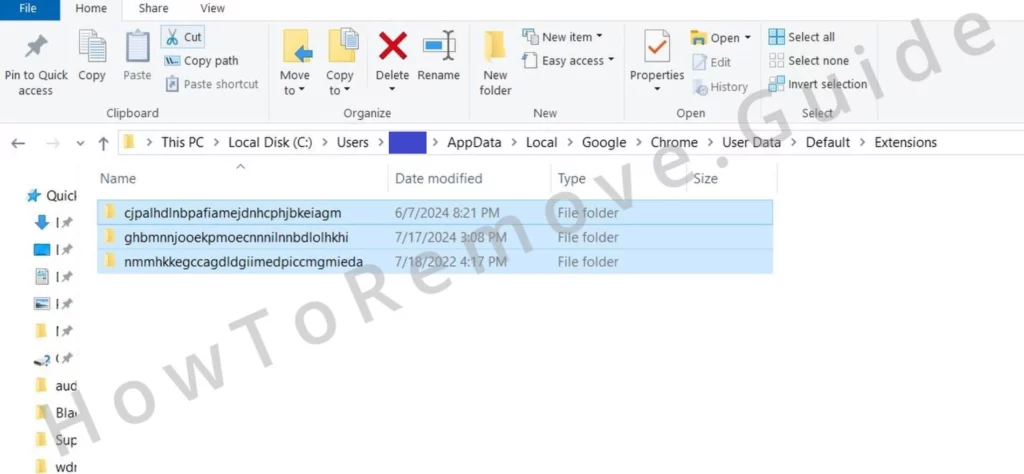
After you clear the contents of the respective folder, return to the Extensions Manager.
Enable Developer Mode which will display detailed information about each extension. You must copy the IDs linked to any suspicious extensions and save them in the same text file as the policy values you noted earlier.
Delete Addmitad.com Virus Policies
Time to tackle the core of the problem: the rogue policies of the hijacker that are keeping your browser under its control. Here’s how to do this:
Launch the Registry Editor with admin rights. You can search for it in the Start Menu, right-click it, and select “Run as Administrator”.
Then use Ctrl + F to open the registry search. Copy-paste the first rogue policy value into it and click Find Next.
Locate matching registry keys and delete them (the registry keys are the folders in the left panel).
Run multiple searches to ensure complete removal. A single search will only show one result even if there are more, so you must always search an extra time after each deletion.
It’s possible some registry keys resist deletion. The fix is to right-click the parent key of the one you aren’t allowed to delete, select Permissions, then Advanced, then Change. Type “everyone” in the text field and then Check Names.
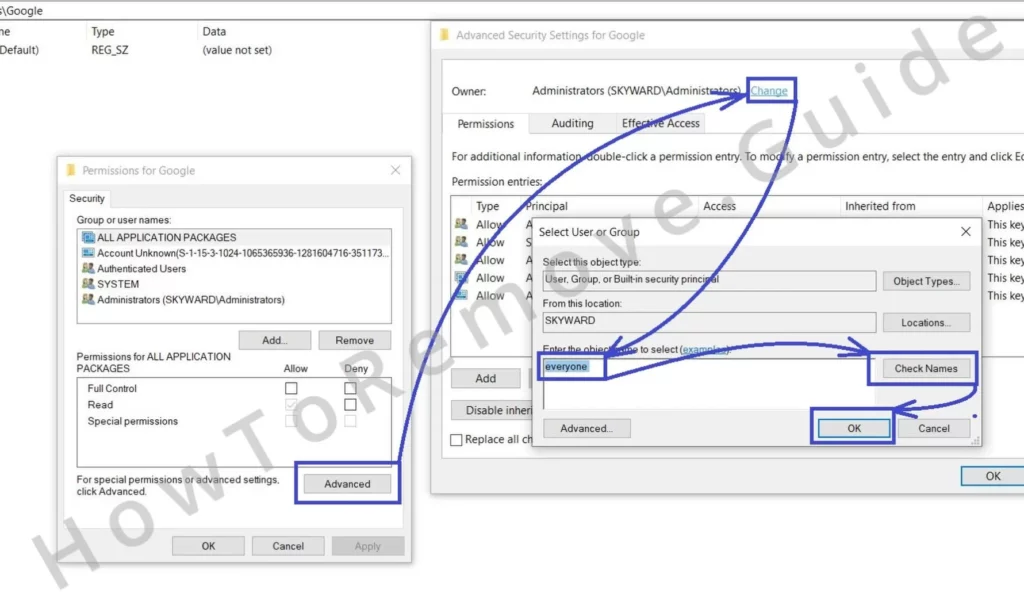
After that, click Apply > OK, enable the two Replace options, save the changes, and exit the Permissions window.
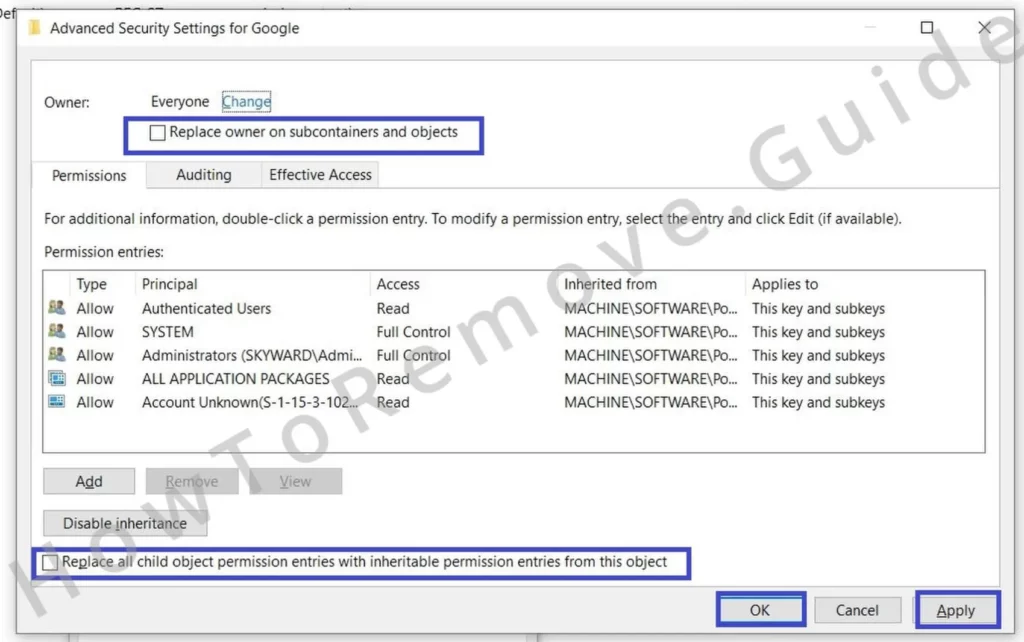
Now you’ll be able to eliminate the rogue registry key.
Remember to search for and delete all keys related to any of the saved policy values and extension IDs.
Alternative Ways to Get Rid of Addmitad Malware Policies
If the Registry cleanup wasn’t enough, try this:
Access the Group Policy Editor by searching for “Edit Group Policy” in the Start Menu.
Right-click Administrative Templates, choose Add/Remove Templates, and remove any listed templates. We doubt anything you may find there was added by you, so just delete everything.
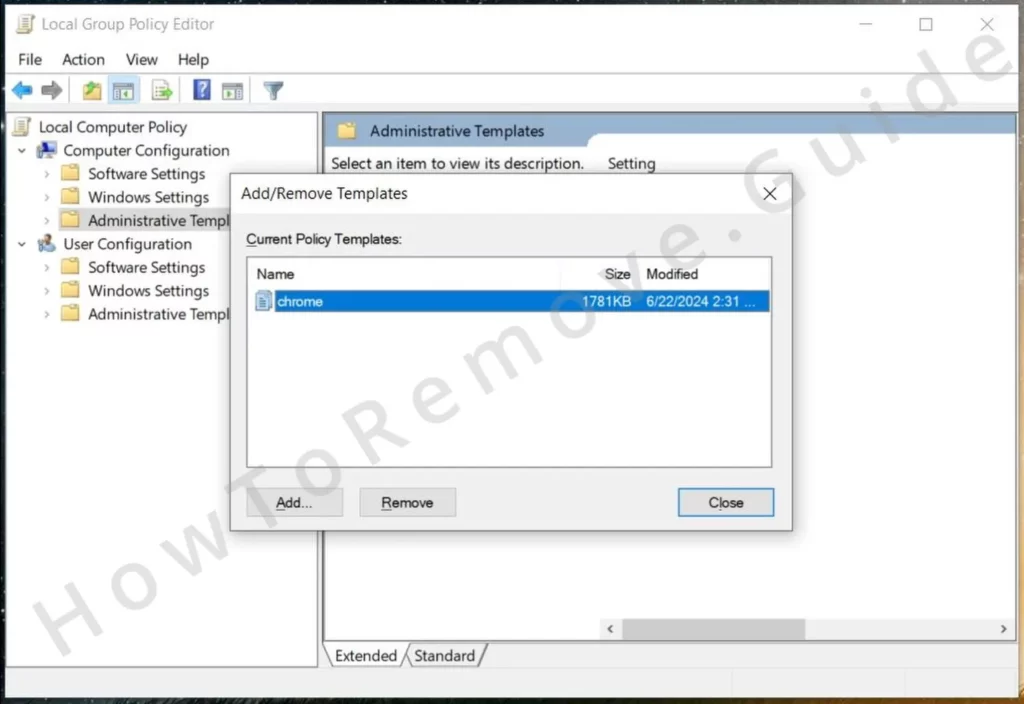
Chrome users can also utilize the free Chrome Policy Remover tool to delete unwanted policies automatically. Just download it and run it with Admin rights.
The tool is safe, so don’t worry even if Windows shows you a warning. Just click More Info > Run and the utility will automatically get rid of any remaining policies in the Chrome browser.
How to Uninstall Addmitad From Chrome
With rogue policies and registry entries gone, turn your attention back to your browser.
Reopen the Extensions page in your browser yet again and finally get rid of any unwanted extensions that may be enabling Addmitad.
Then, from the browser menu, go to Settings > Privacy and Security. Click on delete browsing data and clear all data types except passwords for a period that goes back to before Addmitad appeared.
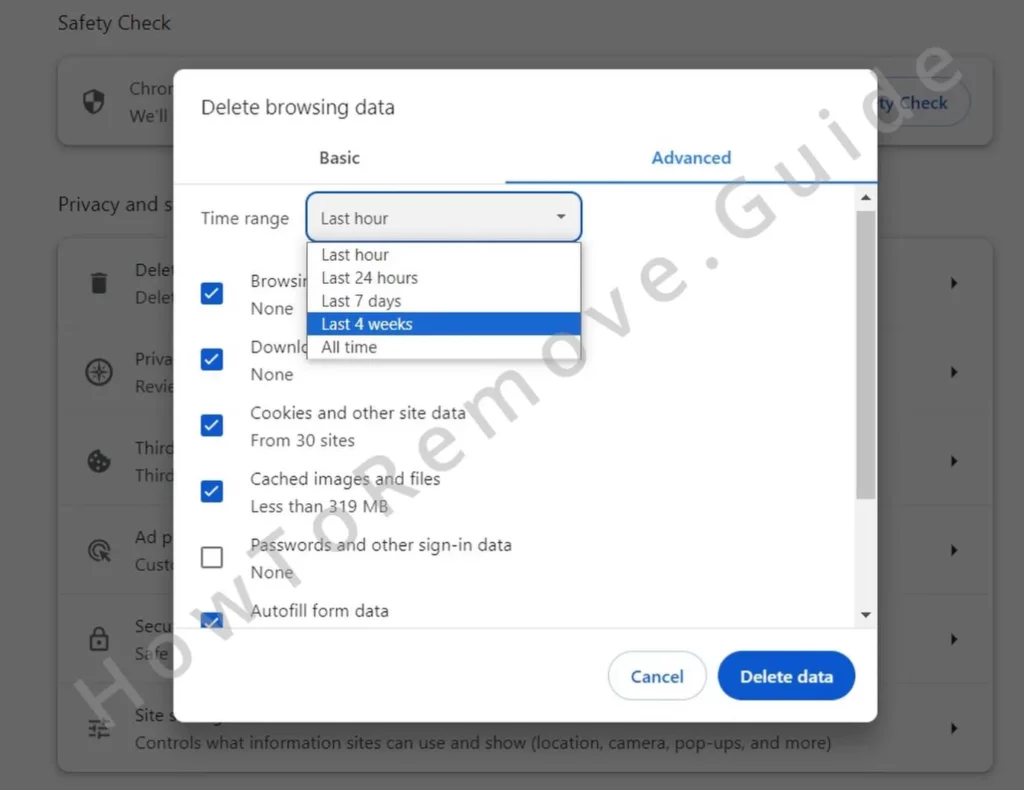
Also, in Privacy and Security, once again check Site Settings. This time review all permission types and remove Addmitad.com or any other unfamiliar URLs listed under “Allow”.
Then reset the browser’s search engine to a trusted provider by going to the Search Engine settings. Also, open Manage Search Engines and remove any dubious entries.

The final places you need to check are the On Startup and Appearance tabs. Ensure no rogue URLs appear on either of them.
Once all this is done, the rogue Addmitad site should no longer be triggering random redirects or showing you obstructive popups. However, even if the hijacker is still bothering you, know that there’s a way to get rid of it. SpyHunter 5 is ideal for such situations, where something small, yet particularly annoying is messing with your browser, so give it a try if you the hijacker isn’t gone yet.

Leave a Reply